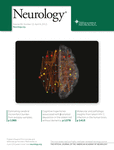Neurology:植入性循环心电检测仪明显提高隐源性卒中的房颤检出率
2013-04-24 Neurology dxy
隐源性卒中的原因探讨一直是卒中研究的热点之一,来自剑桥大学的Paul E. Cotter等学者们利用植入性循环心电检测仪研究了隐源性卒中心房颤动的情况,发表在2013年4月23日的Neurology杂志上。该研究利用增加了心房颤动监测能力的设备 (Reveal XT)--植入性循环心电检测仪(ILR)检测隐源性卒中患者的心房颤动发生率及该类伴房颤患者的其他相关因素。结果显示:植入性循环心电检测仪明
隐源性卒中的原因探讨一直是卒中研究的热点之一,来自剑桥大学的Paul E. Cotter等学者们利用植入性循环心电检测仪研究了隐源性卒中心房颤动的情况,发表在2013年4月23日的Neurology杂志上。该研究利用增加了心房颤动监测能力的设备 (Reveal XT)--植入性循环心电检测仪(ILR)检测隐源性卒中患者的心房颤动发生率及该类伴房颤患者的其他相关因素。结果显示:植入性循环心电检测仪明显提高隐源性卒中的房颤检出率。
本研究共纳入51例不明原因(隐源性)缺血性卒中患者,入院时常规影像及至少24小时Holter检查,随后植入ILRs监测设备。
患者的年龄在17到73岁之间(平均52岁)。其中30例患者有循环分流检查结果,22例患者有卵圆孔未闭(73.3%; 95%可信区间为[CI] 56.5%–90.1%)。13例患者中检测出房颤(25.5%; 95% CI 13.1%–37.9%)。房颤明显与年龄增大(p = 0.018)、心房传导阻滞(p = 0.02)、左房容量(p = 0.025)及ILR植入前检测的房性期前收缩(p = 0.004)相关。ILR检测到心房颤动的平均时间为48天(范围为0–154天)。
对不明原因卒中患者,ILR检测到的心房颤动发生率为25.5%。这种心房颤动的预测方式能够更好的用于研究。对于隐源性卒中患者ILRs或许在以后会发挥更大的作用。
与房颤相关的拓展阅读:
- Neurology:新诊断房颤与晨起卒中和TIA独立相关
- Nat Rev Cardiol:瑜伽有助于改善房颤患者的房颤负荷
- CAE:房颤患者消融围手术期服用达比加群的安全性
- ACC 2013:房颤患者首次应用地高辛死亡率升高
- Ann Intern Med:房颤增痴呆风险再添新证
- Eur Heart J:女性房颤可以提前预警 更多信息请点击:有关房颤更多资讯

Incidence of atrial fibrillation detected by implantable loop recorders in unexplained stroke.
OBJECTIVES
The usefulness of the implantable loop recorder (ILR) with improved atrial fibrillation (AF) detection capability (Reveal XT) and the factors associated with AF in the setting of unexplained stroke were investigated.
METHODS
A cohort study is reported of 51 patients in whom ILRs were implanted for the investigation of ischemic stroke for which no cause had been found (cryptogenic) following appropriate vascular and cardiac imaging and at least 24 hours of cardiac rhythm monitoring.
RESULTS
The patients were aged from 17 to 73 (median 52) years. Of the 30 patients with a shunt investigation, 22 had a patent foramen ovale (73.3%; 95% confidence interval [CI] 56.5%-90.1%). AF was identified in 13 (25.5%; 95% CI 13.1%-37.9%) cases. AF was associated with increasing age (p = 0.018), interatrial conduction block (p = 0.02), left atrial volume (p = 0.025), and the occurrence of atrial premature contractions on preceding external monitoring (p = 0.004). The median (range) of monitoring prior to AF detection was 48 (0-154) days.
CONCLUSION
In patients with unexplained stroke, AF was detected by ILR in 25.5%. Predictors of AF were identified, which may help to target investigations. ILRs may have a central role in the future in the investigation of patients with unexplained stroke.
作者:Neurology
版权声明:
本网站所有注明“来源:梅斯医学”或“来源:MedSci原创”的文字、图片和音视频资料,版权均属于梅斯医学所有。非经授权,任何媒体、网站或个人不得转载,授权转载时须注明“来源:梅斯医学”。其它来源的文章系转载文章,本网所有转载文章系出于传递更多信息之目的,转载内容不代表本站立场。不希望被转载的媒体或个人可与我们联系,我们将立即进行删除处理。
在此留言





#检出率#
49
#植入性#
49
#隐源性卒中#
63
#Neurol#
39
#植入#
36